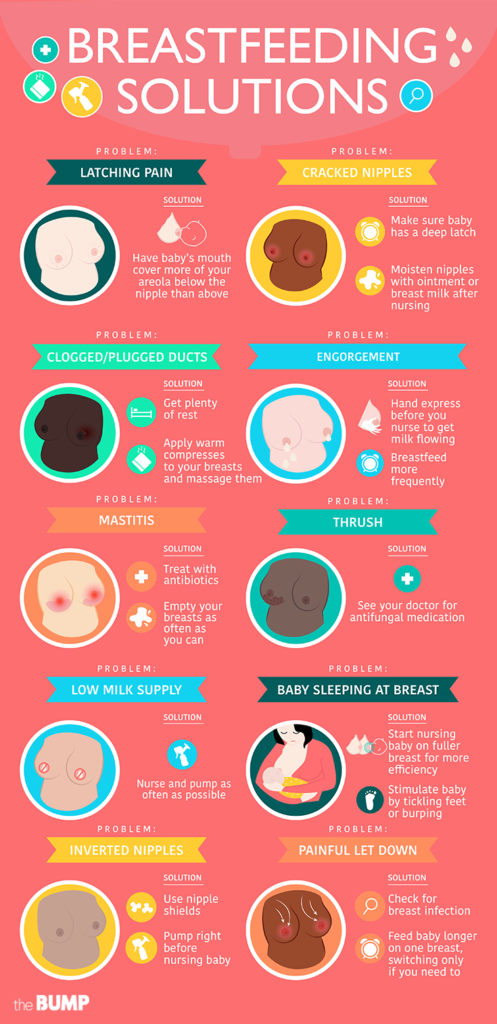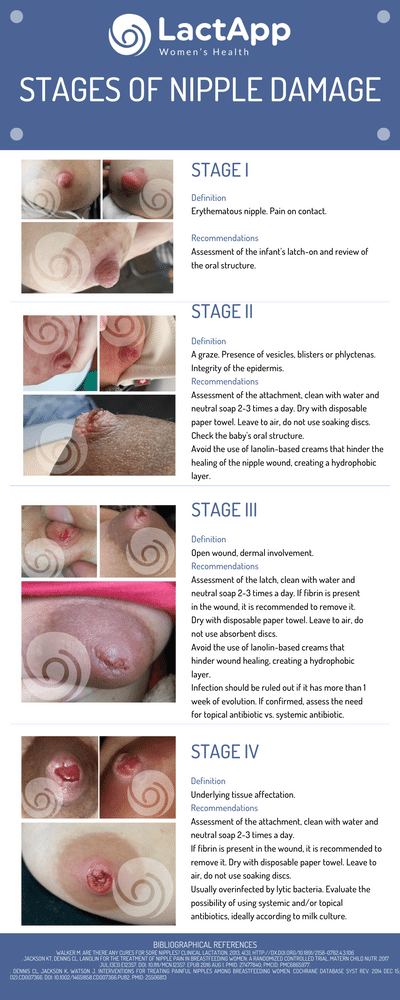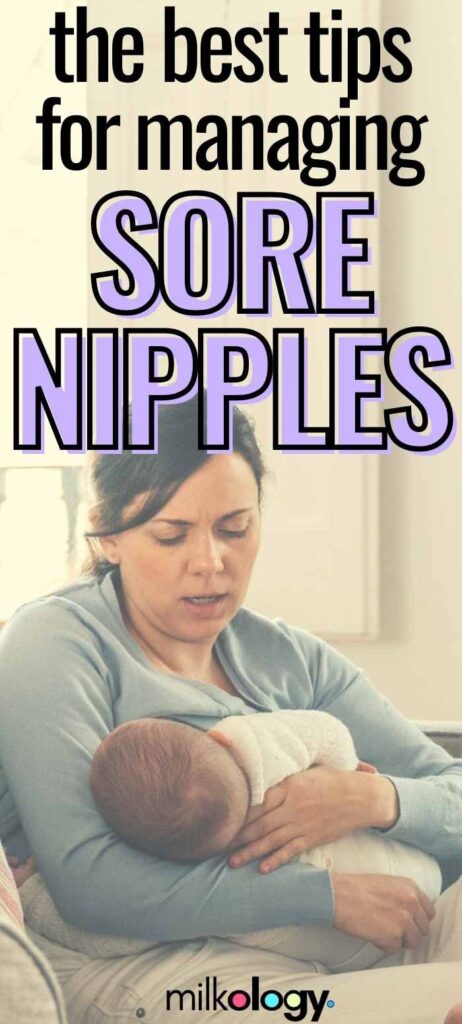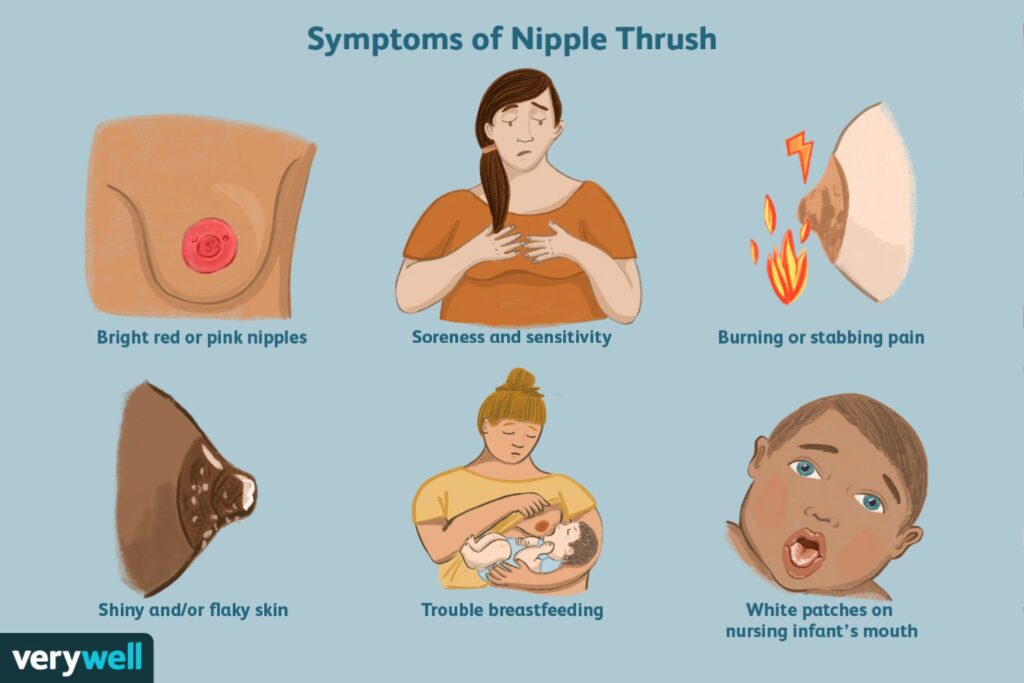Breastfeeding can be a truly rewarding experience for both you and your little one, but it’s no secret that sore nipples can sometimes dampen the joy. However, there’s no need to worry! In this article, we’ll explore some simple and effective ways to manage sore nipples while breastfeeding, so you can continue to nurture your baby with comfort and confidence. From soothing techniques to proper latch and positioning, we’ve got you covered on your breastfeeding journey.


1. Establishing a Good Latch
Breastfeeding is a beautiful and natural way to nourish your baby. To ensure a comfortable and successful breastfeeding journey, it is crucial to establish a good latch. A proper latch means that your baby is effectively latching onto your breast, allowing for efficient milk transfer and minimizing discomfort for both you and your little one.
1.1 Importance of a proper latch
A good latch ensures that your baby is getting enough milk, which is essential for their growth and development. It also helps stimulate your milk supply and prevents issues such as engorgement and nipple soreness. Additionally, a proper latch promotes bonding between you and your baby, creating a positive breastfeeding experience for both of you.
1.2 Signs of a poor latch
A poor latch can result in sore and cracked nipples, inadequate milk transfer, and frustration for both you and your baby. Signs of a poor latch include pain during breastfeeding, a clicking sound while your baby feeds, your baby appearing unsatisfied after feeding, and flattened or creased nipples after nursing.
1.3 Techniques for improving latch
To ensure a proper latch, start by ensuring that you and your baby are in a comfortable breastfeeding position. Hold your baby close to your body, with their head and body aligned. When your baby opens their mouth wide, bring them closer to your breast, ensuring that their mouth covers a significant portion of the areola. This will help them latch onto the breast, rather than just the nipple.
Remember to bring your baby to the breast, rather than leaning forward to bring your breast to your baby. This can help prevent strain on your back and neck while ensuring a more effective latch. If you’re experiencing difficulties with latch, consider seeking support from a lactation consultant who can provide guidance and support.
2. Ensuring Correct Positioning
Proper positioning during breastfeeding is crucial for both you and your baby. Correct positioning not only helps your baby latch properly but also ensures a comfortable feeding experience for you, minimizing the risk of sore nipples and other discomforts.
2.1 Importance of correct positioning
Correct positioning allows your baby to access the breast easily, promotes efficient milk transfer, and reduces the strain on your breasts and nipples. It also helps prevent issues such as engorgement and clogged ducts.
2.2 Proper breastfeeding positions
There are various breastfeeding positions to try, including the cradle hold, cross-cradle hold, football hold, and side-lying position. Each position has its benefits, and you may find that some positions work better for you and your baby than others. Experiment with different positions until you find the one that feels most comfortable and allows for a good latch.
2.3 Using pillows and supports
Using pillows and supports can be incredibly helpful in achieving proper positioning. Placing a pillow or nursing support under your arm or behind your back can provide additional support and help align your baby with your breast. This reduces the strain on your body and makes breastfeeding more comfortable for both you and your baby.
Remember to adjust the height and angle of the pillows or supports to find the most comfortable position. It is essential to prioritize your comfort and well-being during breastfeeding, as it directly impacts your breastfeeding experience and overall satisfaction.
3. Breastfeeding Frequency and Duration
Breastfeeding frequency and duration play an essential role in ensuring your baby receives enough milk while minimizing the risk of nipple soreness and other breastfeeding challenges. Understanding the role of breastfeeding frequency can help you establish a feeding routine that works for you and your little one.
3.1 Understanding the role of breastfeeding frequency
Breastfeeding frequency refers to how often you nurse your baby throughout the day. Newborns typically feed more frequently, as their stomachs are small and breast milk is rapidly digested. As your baby grows, the frequency of feeding may naturally decrease.
Breastfeeding frequency is crucial for maintaining milk supply and meeting your baby’s nutritional needs. Frequent nursing helps stimulate milk production, especially during the early postpartum period. It is essential to feed your baby on demand and follow their hunger cues. This ensures they receive adequate nourishment while also preventing breast engorgement and discomfort.
3.2 Balancing between overfeeding and underfeeding
While it is necessary to feed your baby frequently, it is also important to find a balance between overfeeding and underfeeding. Overfeeding can lead to discomfort for both you and your baby and increase the risk of issues such as reflux. On the other hand, underfeeding can result in inadequate milk intake and slow weight gain.
To strike a balance, pay attention to your baby’s cues and respond to their hunger signs. Some signs of hunger include rooting, sucking on fingers or lips, and increased alertness. By following your baby’s lead and feeding them when they show signs of hunger, you can provide them with the right amount of milk and prevent unnecessary discomfort.
3.3 Time limits for breastfeeding sessions
The duration of breastfeeding sessions can vary from baby to baby. Some babies may feed for shorter periods, while others may nurse for more extended periods. It is essential to let your baby nurse for as long as they need to ensure they receive enough milk.
Avoid imposing strict time limits on your breastfeeding sessions, as this may interfere with your baby’s ability to get enough milk. Instead, focus on their cues and allow them to nurse until they are satisfied. Remember that breastfeeding is not only about nourishing your baby but also about nurturing their emotional needs and fostering bonding between you and your little one.
4. Engorgement and Its Impact on Sore Nipples
Breast engorgement is a common issue that can contribute to sore nipples during breastfeeding. Understanding the causes of engorgement and learning techniques to relieve it can help you manage nipple soreness more effectively.
4.1 Causes of engorgement
Engorgement occurs when there is an excessive build-up of milk in your breasts, causing them to become swollen, firm, and painful. Engorgement can be caused by various factors, including an oversupply of milk, infrequent or ineffective breastfeeding, abrupt weaning, or skipped feeding sessions.
4.2 Techniques to relieve breast engorgement
There are several techniques to relieve breast engorgement and alleviate nipple soreness. Warm compresses or warm showers before nursing can help soften the breasts and make it easier for your baby to latch. You can also try gentle massaging of your breasts while nursing to encourage milk flow and relieve discomfort.
If your baby is having difficulty latching due to severe engorgement, hand expressing or using a breast pump for a few minutes before nursing can help soften the breasts and improve latch. Cold compresses or ice packs applied after nursing can also provide relief by reducing swelling and pain.
4.3 Managing nipple soreness during engorgement
Nipple soreness often accompanies engorgement, making breastfeeding uncomfortable and challenging. To manage nipple soreness, ensure a proper latch, as this will prevent your baby from putting excessive pressure on your nipples. Applying lanolin-based nipple creams or ointments can help soothe sore nipples and promote healing.
Remember to seek support from a lactation consultant or healthcare professional if engorgement and nipple soreness persist despite your efforts to manage them. They can provide additional guidance tailored to your specific situation and help you find relief.


5. The Role of Breastfeeding Accessories
Breastfeeding accessories can be valuable tools in managing sore nipples and ensuring a comfortable breastfeeding experience. Understanding the benefits and limitations of various accessories can help you make informed choices that suit your needs.
5.1 Nipple shields
Nipple shields are silicone or rubber covers that fit over the nipples to help your baby latch and protect sore or cracked nipples. They can be useful in certain situations, such as when your baby has difficulty latching or when you have severe nipple soreness. However, nipple shields should be used under the guidance of a lactation consultant, as prolonged use may affect milk supply and hinder proper latch.
5.2 Breast pads
Breast pads, also known as nursing pads, are absorbent pads that you can place in your bra to prevent leaking breast milk from soaking through your clothing. They can help keep your nipples dry, reducing the risk of irritation and soreness. There are disposable and reusable options available, depending on your preference and environmental concerns.
5.3 The benefits and limitations of using breastfeeding accessories
Breastfeeding accessories can provide practical solutions to common breastfeeding challenges, such as sore nipples and leaking breasts. However, it is important to remember that they are not a substitute for addressing underlying issues, such as latch problems or engorgement. Breastfeeding accessories should be used as tools to support and enhance your breastfeeding experience, rather than relying on them solely to manage sore nipples.
Consult with a healthcare professional or lactation consultant before using any breastfeeding accessories. They can provide guidance on proper usage, ensure they are appropriate for your situation, and offer additional support if needed.
6. Expressing and Storing Breast Milk
Expressing and storing breast milk can be beneficial for various reasons, such as relieving engorgement, allowing others to feed your baby, or building a supply for when you return to work or need to be away from your baby. Learning the importance of expressing breast milk, techniques for expressing, and proper storage and handling can help you navigate this aspect of breastfeeding.
6.1 The importance of expressing breast milk
Expressing breast milk offers flexibility and convenience, allowing you to provide your baby with your milk even when you cannot be present for every feeding. It also helps maintain milk supply and relieve engorgement. Furthermore, expressing milk enables others, such as your partner or caregiver, to participate in feeding and bonding with your baby.
6.2 Techniques for expressing
There are several methods for expressing breast milk, including hand expression, manual breast pumps, and electric breast pumps. Hand expression involves using your hands to squeeze and release the breast to express milk. Manual and electric breast pumps use suction to extract milk from the breast.
Experiment with different techniques and find the method that works best for you. It may take some practice and patience to become comfortable with expressing milk, so be gentle with yourself and allow yourself time to learn.
6.3 Proper storage and handling of breast milk
Proper storage and handling of breast milk are crucial to maintain its quality and safety. Store expressed breast milk in clean containers specifically designed for breast milk storage, such as BPA-free bottles or storage bags. Label the containers with the date and time of expressing to ensure you use the oldest milk first.
Freshly expressed milk can be stored at room temperature for up to four hours, in the refrigerator for up to four days, and in the freezer for up to six months. Thaw frozen breast milk in the refrigerator or by placing the container in a bowl of warm water. Use thawed breast milk within 24 hours and do not refreeze previously frozen milk.
7. Managing Thrush and Other Infections
Thrush and other infections can contribute to nipple soreness and discomfort during breastfeeding. Understanding the causes, appropriate treatment, and preventive measures can help you effectively manage these infections and minimize their impact on your breastfeeding experience.
7.1 Understanding thrush and its impact on nipple soreness
Thrush is a fungal infection caused by the overgrowth of Candida, a naturally occurring yeast. It can occur in both you and your baby’s mouth, leading to nipple soreness, cracked nipples, and a burning sensation. Thrush can be challenging to treat and may require a multi-faceted approach.
In addition to thrush, other infections such as mastitis or blocked ducts can also contribute to nipple soreness and discomfort. Recognizing the signs and symptoms of these infections can help you seek appropriate treatment promptly.
7.2 Appropriate treatment for thrush
If you suspect you or your baby have thrush, it is crucial to seek medical advice for an accurate diagnosis and appropriate treatment. Treatment for thrush may involve antifungal medications for both you and your baby, as well as careful attention to hygiene practices to prevent reinfection.
In some cases, thrush may require more intensive treatment, such as sterilizing pacifiers or bottle nipples, replacing breastfeeding or pumping equipment, or implementing dietary changes. Consult with a healthcare professional or lactation consultant for tailored advice and guidance.
7.3 Preventive measures to avoid infections
To minimize the risk of infections, including thrush, it is important to practice good hygiene and care during breastfeeding. Clean your nipples and breasts regularly with warm water and a mild soap, and allow them to air dry between feedings. Avoid using harsh soaps or skincare products on your breasts that may irritate the skin.
Ensure that your baby’s mouth is also clean and free from any signs of infection. Clean pacifiers, bottle nipples, and breastfeeding accessories thoroughly and sterilize them regularly. Practice proper hand hygiene before each feeding and avoid sharing towels or other personal items that may transmit infection.
8. Moisturizing and Healing Techniques
Moisturizing and healing techniques can provide relief for sore nipples and promote their healing during breastfeeding. Choosing suitable nipple creams or ointments, exploring natural remedies, and prioritizing gentle care and hygiene can help manage nipple soreness effectively.
8.1 Choosing suitable nipple creams or ointments
Nipple creams or ointments can be beneficial in soothing and moisturizing sore nipples. Look for products that are safe for breastfeeding and do not need to be washed off before nursing. Lanolin-based creams are a popular choice, as they provide a protective barrier and help promote healing. However, if you have a lanolin allergy, consider alternative options such as coconut oil or olive oil.
Consult with a healthcare professional or lactation consultant before using any nipple creams or ointments. They can guide you on suitable options based on your specific needs and preferences.
8.2 Natural remedies for nipple healing
Alongside commercial nipple creams, natural remedies can provide additional relief and promote healing for sore nipples. Applying cool tea compresses, such as chamomile tea bags, can provide soothing relief. Expressing a small amount of breast milk and allowing it to air dry on your nipples can also be beneficial due to its natural healing properties.
Additionally, ensuring a balanced diet with adequate hydration, practicing good sleep hygiene, and managing stress levels can positively impact nipple healing and overall well-being.
8.3 The importance of gentle care and hygiene
During breastfeeding, it is crucial to handle your nipples and breasts with care and practice good hygiene. Avoid excessive rubbing or scrubbing of the nipples, as this can further irritate the skin. Instead, pat them dry gently after cleaning or nursing and allow them to air dry whenever possible.
Wearing loose, breathable clothing can also help prevent friction and irritation. Avoid using harsh detergents or fabric softeners when washing your breastfeeding bras or clothing, as these can cause skin sensitivity.


9. Seeking Support and Professional Help
Breastfeeding can present various challenges, and it is essential to seek support and professional help when needed. Lactation consultants and a support network can provide guidance, reassurance, and practical tips to navigate sore nipples and other breastfeeding difficulties.
9.1 The role of lactation consultants
Lactation consultants are valuable resources for breastfeeding mothers. They specialize in providing expert guidance and support to help you overcome breastfeeding challenges and achieve your breastfeeding goals. Lactation consultants can assess latch and positioning, address concerns about sore nipples, and help troubleshoot any issues you may encounter during your breastfeeding journey.
If you are experiencing persistent nipple soreness or are struggling with breastfeeding, consider reaching out to a lactation consultant for personalized assistance and support.
9.2 Establishing a support network
Having a support network of family, friends, or other breastfeeding mothers can make a significant difference in your breastfeeding experience. Surrounding yourself with like-minded individuals who understand and support your breastfeeding goals can provide reassurance, empathy, and practical advice.
Consider joining local breastfeeding support groups or online communities to connect with other breastfeeding mothers. Sharing experiences, asking questions, and receiving encouragement from others who have been through similar challenges can be incredibly empowering and motivating.
9.3 When to seek medical advice
While most cases of nipple soreness can be managed with proper techniques and support, there may be instances when seeking medical advice is necessary. If nipple soreness persists despite implementing various strategies, or if you notice signs of infection such as redness, swelling, or discharge, it is important to consult with a healthcare professional.
They can assess your specific situation, provide a diagnosis, and offer appropriate treatment options. Early intervention can prevent further complications and help you continue your breastfeeding journey with greater comfort and confidence.
10. Coping with Emotional Challenges
Breastfeeding challenges, including sore nipples, can impact your emotional well-being. It is important to acknowledge and address any emotional challenges you may face, taking steps to prioritize your emotional well-being and maintain a positive mindset throughout your breastfeeding journey.
10.1 Emotional impact of sore nipples
Experiencing sore nipples can be emotionally challenging, leaving you feeling frustrated, defeated, or even guilty. It is important to remember that sore nipples are a common part of many breastfeeding journeys and do not reflect your abilities as a mother.
Seeking support from loved ones, joining support groups, or speaking to a counselor or therapist can provide an outlet to express your emotions and receive guidance on coping strategies. Remember, you are not alone in your challenges, and reaching out for help is a sign of strength.
10.2 Self-care strategies for emotional well-being
Practicing self-care is crucial to maintaining your emotional well-being during your breastfeeding journey. Take time for yourself, whether it’s indulging in a relaxing bath, reading a book, or pursuing a hobby you enjoy. Prioritize adequate rest and sleep to ensure you have the energy and resilience to navigate challenges.
Engaging in regular exercise and maintaining a balanced diet can contribute to your overall well-being, both physically and emotionally. Consider journaling or practicing mindfulness techniques to help manage stress and cultivate a positive mindset.
10.3 Recognizing the importance of a positive mindset
Maintaining a positive mindset can greatly impact your breastfeeding experience, including your ability to manage sore nipples. Celebrate your achievements, no matter how small they may seem. Focus on the bond you are creating with your baby and the nourishment you are providing them through breastfeeding.
Remind yourself that sore nipples are temporary and often improve with time and proper care. Surround yourself with positive affirmations and, when faced with challenges, remind yourself of your determination and strength. With patience, support, and a positive mindset, you can navigate through any breastfeeding obstacle, including sore nipples, and create a fulfilling and joyful experience for both you and your baby.
In conclusion, managing sore nipples while breastfeeding is an essential aspect of ensuring a comfortable and successful breastfeeding journey. By establishing a good latch, ensuring correct positioning, managing breastfeeding frequency and duration, addressing engorgement, utilizing breastfeeding accessories, expressing and storing breast milk, managing infections, moisturizing and healing techniques, seeking support, coping with emotional challenges, and maintaining a positive mindset, you can effectively manage nipple soreness and create a positive breastfeeding experience for both you and your baby. Remember to seek professional help when needed and prioritize self-care to nurture your emotional well-being.


